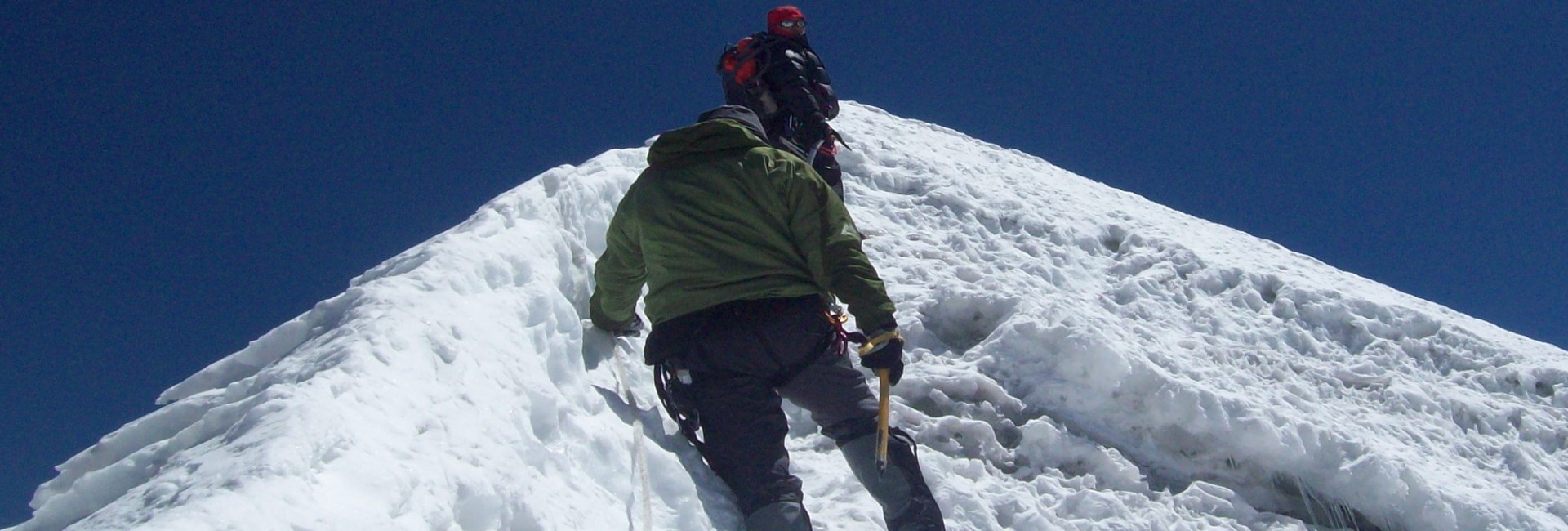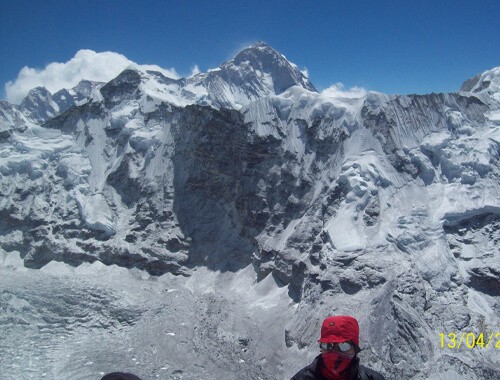“Join Nepal Dream on our Everest expedition 2023 as we are now preparing for the upcoming climbing season. Climb the highest mountain in the world, Mt. Everest, with the best mountaineers who make sure you not only reach the summit of Mt. Everest safely but return safely too.”
Regardless of all the media attention over Mount Everest and the number of climbers attempting to reach its top, climbing this giant mountain is not an easy feat. Even with all the support and assistance of the best Sherpas, you'll be needing physical fitness, willpower, determination, and a strong mindset to reach the top of the mountain that demands you to break all your limits.
Nepali people call Everest, Sagarmatha. The mountain is located northeast of the country in the Khumbu region, which is an extreme part of the world. From Gorak Shep onwards, there is no settlement, so you have to be self-sufficient, otherwise it's nature that will take on you, and trust us, you wouldn't like that.
During our 63 days of Mt. Everest expedition, you will be guided by an expert team. From the moment you sign up with us to the summit and back, we will be with you at every step of this ultimate mountaineering adventure. You will spend multiple days trekking and acclimatizing before reaching Everest base camp. The base camp will be our permanent camp. We will have all of our tents, supplies, doctors, and all logistics support at the base camp.
We have customized a 63-day Everest expedition for 2023 & 2024. It is a tested itinerary plan that follows the southern route, which has the highest success rate. The 63-day Mount Everest expedition package provides you ample time to adjust to the surroundings as you gradually gain elevation.
From the Mount Everest base camp to the summit and back, we’ll spend 43 days. In these 43 days, we'll be acclimatizing and joining multiple pre-climbing training. We will do many rotation ascends to Camp I, Camp II, and further before the final push towards the summit of Mount Everest. In between the time, our team will stay updated with the weather condition and look out for the best climbing window.
Climb Mount Everest with the best Sherpa guides at Nepal Dream
Our mountain guides have summited Mount Everest numerous times before and led many individuals to the top of it as well. When we say you'll climb with an experienced team, we mean Sherpas who have 10+ years of climbing experience and have climbed numerous mountains in the Himalayas. They do the most difficult work for you on Everest, establishing and maintaining the routes through the notorious Khumbu Icefall and beyond.
We will take it slow but do not let us get unfocused. Our base camp crew, the porters, will take care of all the logistical operations. We control all of our operations in-house to uphold and ensure our high service standards. The goal is to offer the best Mount Everest climbing experience to our foreign guests while keeping up with the safety that you can see at every step of the expedition.
Tents & supporting crew
All the climbing members will get a personal sleeping tent with an Exped down-filled mattress for extra comfort. Likewise, we have separate dining and washroom tents. Of course, the dining tent is more sort of a common area where the team can mingle and plan.
The dining tents are well carpeted, heated, and lit by solar electricity. We make sure your time at base camp is as comfortable as possible. To maintain hygiene, we keep the shower tent and toilet tents separate.
An experienced cook will be at the base camp with you to cater your delicious nutritious meals and beverages. The porters will set the tent before you arrive at the base camp and welcome you.
Everest expedition south col route climbing strategy
As we mentioned earlier, we have our permanent Everest expedition camp at 5,364 meters. FYI: it is the lap of Mt. Everest, known as the Everest base camp. Our acclimatization hike goes up to Camp III. We'll be going on and off of the Khumbu Icefall numerous times during the acclimatization period. The mountain guides will ensure the high camps are well stocked with all the essentials, food, and oxygen cylinders.
Before we move towards the summit, we return to the base camp for recuperation and rest. As soon as we get the signal of the summit window, we push towards Camp I (5,900 m/19,500 ft) at the pinnacle of the icefall, Camp II (6,400 m/21,000 ft) in Western CWM, Camp III (7,300m /23,700 ft) at the top of the cirque on Lhotse Face, Camp IV (7,900m/25,912ft), and finally to the summit.
The guides will fix ropes for you. We will cross crevasses and seracs with the help of leaders and crampons. Our climber-Sherpa ratio will be 1:1.
Everest expedition booking open for Spring 2023 and 2024
After leading many individuals and groups to the top of Mt. Everest in the last few years, we are glad to open our Everest expedition for the 2023 climbing season. We are also taking pre-booking for the Everest expedition 2024. Our groups are small and packed with experienced Sherpas, which increases the success rate.
To book a spot for you, get in touch with us as soon as we can. It is better to book at least 3 to 5 months prior to the expedition time to prepare well. Our team will help you with the booking process and all necessary requirements.

